Magnolia Plantation and Gardens
Click on the first photo in each group and scroll to see the square photos at full size.
To start at the beginning of this series, visit Road Trip!
We spent this day near the banks of the Ashley River, about 30 minutes northwest of Charleston. As it turned out, early November wasn’t the best time of year to visit a garden, but this historic plantation still had its appeal even if the gardens were not at their finest. Since we traveled from Wisconsin to prolong the nice fall weather with two weeks down south, we enjoyed the day just because of the warm sun on our shoulders as we strolled the paths of the plantation and along the banks of the Ashley. The Plantation House tour added a little history, which we always enjoy.
For a future trip (when the gardens are bursting with color in April or May), there will be plenty more to do, including a Nature Train, a Nature Boat, The Slavery to Freedom Tour and an Audubon Swamp Garden Tour. To save $8, you can get the “works” for a discounted price.
We arrived for an early Plantation House tour. No photos are allowed, but the stories behind the house and its history were quite fascinating.
“Thomas Drayton and his wife Ann arrived from Barbados to the new English colony of Charles Towne and established Magnolia Plantation along the Ashley River in 1676. Thomas and Ann were the first in a direct line of Magnolia family ownership that has lasted more than 300 years and continues to this day.”
“The establishment of the early gardens at Magnolia Plantation in the late 17th century would see an explosion of beauty and expansion throughout the 18th century, but not until the early 19th century did the gardens at Magnolia truly begin to expand on a grand scale.” – READ MORE about Magnolia Plantation and Gardens
With much turmoil during that timeline, the house was re-built twice – once after British and American troops occupied its grounds during the American Revolution and then it was struck by lightning and burned – and again when the house was burned again, likely with the help of Union troops during the Civil War. In the aftermath of the Civil War and the economic chaos that ensued, John Drayton opened the gardens to the public to earn money as a tourist attraction. Soon they added the house to the tour.
Probably my most memorable part of the tour was the talk in the upstairs bedroom. On the wall was an old photo of a beautiful woman, and a portrait of her beloved dog hung right next to it. The woman loved her dog so much that she couldn’t imagine traveling without him. Assuming other pet lovers felt the same way, she started allowing folks who toured the home to bring their dogs through as well. Our guide went on to say that when this woman gave tours of the house (her house), she would never let on that she was the woman in the photo. She continued giving tours as long as she could get up the stairs and always shared her love of this beautiful plantation.
Be sure to see some magnificent photos of the flowers in bloom – along with an excellent synopsis of the history of this place by clicking here.
Since we didn’t pay extra to see the Zoo and Nature Center, we took a few minutes to check out the horses that were greeting visitors. They let me scratch their noses, but once they realized I didn’t have any treats for them, they moved on to their next prospects.
After the Plantation House tour, we watched a 30-minute film in the Orientation Theater that gives a pretty in-depth overview of the fascinating history of the plantation. Then we were off to the gardens. With benches at almost every turn and warm sunshine peaking through – except in the densest areas of the plantation grounds, it was a very pleasant day.
The gardens at Magnolia Plantation have delighted tourists from around the world since the early 1870s, but some sections are more than 300 years old. The plantation has been owned by the same family for more than three centuries, and each generation has expanded and added to its beauty. Today there are camellias, daffodils, azaleas and countless other species in bloom year round, with the climax of incredible beauty building in the spring. If you are planning a trip and would like to see What’s in Bloom during your visit, click on the link.
Even with minimal blooms, we were thinking about the bare trees back home and the chill that was probably in the air. It reminded us how lucky we were to be there, and we made the most of it.
As we headed deeper into the “woods,” the heat of the day was replaced by a more comfortable coolness and a smell of the outdoors. Some areas were very marshy and muddy, but there was a nice path that was pretty well marked to keep you on the right track. The gazebo below is a little disheveled, but looked like a nice place for a break and the trees soared up high above.
We walked past a small lake and a house. Although there was no info on who lived there or what significance it had, it was pretty – and wild roses are always a favorite of mine.
Below is another lake with a wonderful red bridge. Unfortunately the folks on it would not leave, so you have the pleasure of them in the photo. I tried to zoom out as far as I could to make them less noticeable, which helped catch more of the reflection in the water.
As we circled around to the Ashley River side, there were many Live Oak trees, which most often grow in the hot and humid conditions near the coast in the South Carolina low country. They are often shorter trees with expansive branches. They tend to grow toward the ground which helps support the weight of those enormous branches and also keeps them more stable in hurricanes or stormy conditions. They really are quite beautiful, especially when covered in Spanish moss. Spanish moss is neither Spanish or a moss and also thrives in these humid conditions. Read the plaque below if you want more info on Spanish moss. Unlike real mosses, Spanish moss does not take any nutrients from the tree.
The photo of the house above was taken from the Ashley River side. What a fabulous view of the river they had!
We continued on the path and noticed some obviously very old plaques that were placed so many years ago to enhance the visit. The one below left reads: “From this spot 150 years ago, this picture was taken of the wife and daughters of the Rev. John Drayton. While those who care for it come and go, over its 300 years of wars and hurricanes, the ever-changing garden of Magnolia Plantation seems never really to change…”
We continued past a burial vault with the inscription: “Patriot William Henry Drayton, son of Magnolia’s Revolutionary War owner and father of South Carolina’s Governor John Drayton, died in 1779 at age 37 while serving in the Continental Congress. He was buried in then far away Philadelphia at Historic Christ Church, whose members 200 years later, have seen fit to return dust from his gravesite to be interred here with that of his ancestors in midst the beauty of his beloved plantation.”
We weren’t sure if we were in amongst the Audubon Swamp Garden, so we kept our toes as far away from the water as possible as we circled this green and marshy area. It would have been nice to see some gators, as long as they didn’t see us!
The white bridge that reflects so beautifully on the water, must be something when the flowers are in bloom all around it. If you missed it before, be sure to see some magnificent photos of the flowers in bloom – along with an excellent synopsis of the history of this place by clicking here.
We finished off our tour with a chili dog at the Peacock Café. We sat at a picnic table in a great meadow for our last look at the beautiful Plantation House. There were many other options on the menu, but a family who had just finished up said the chili dogs were excellent (and cheap), so we took their word for it, and they were right!
Next up: Morris Island Lighthouse Eco Tour
Happy trails,
Barb

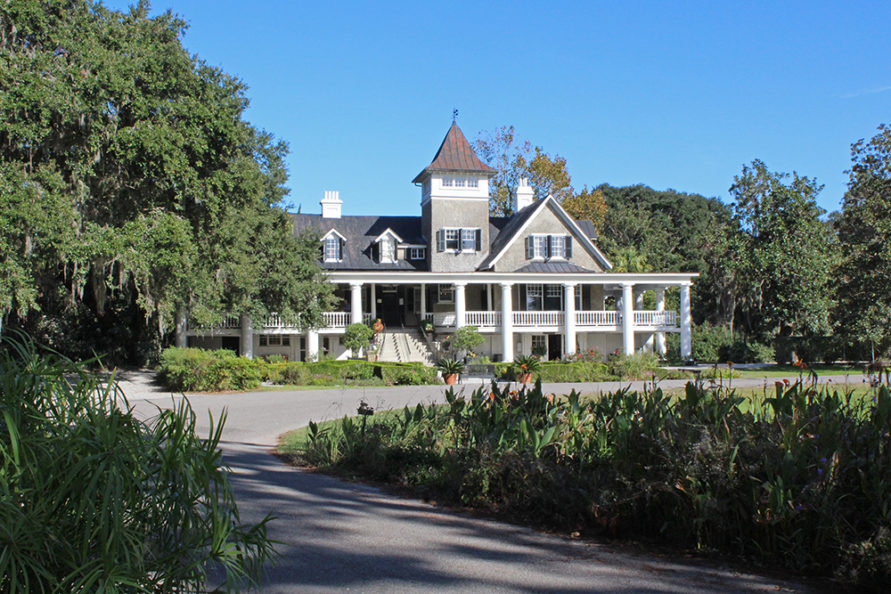

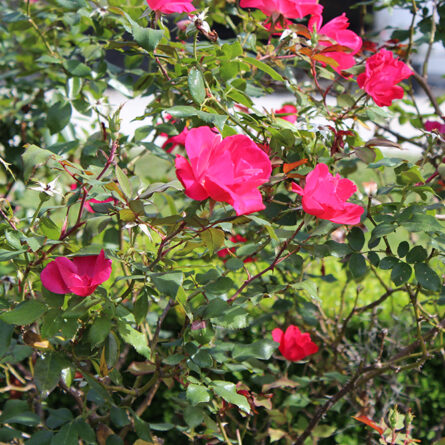
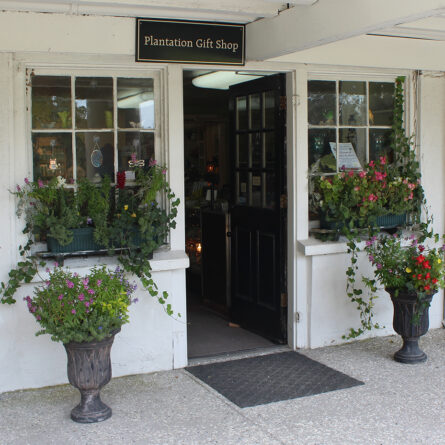
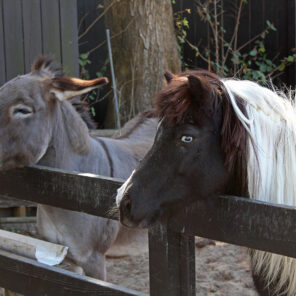

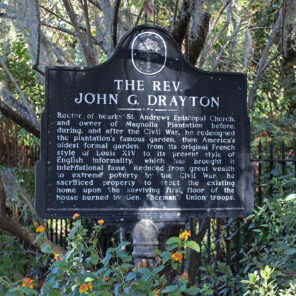

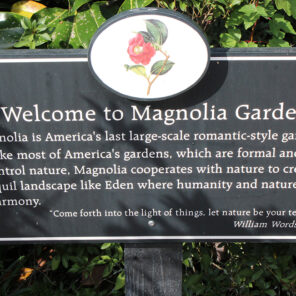

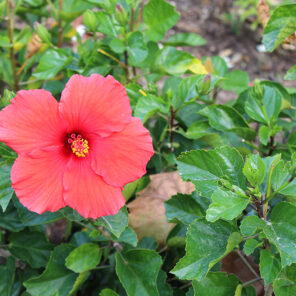

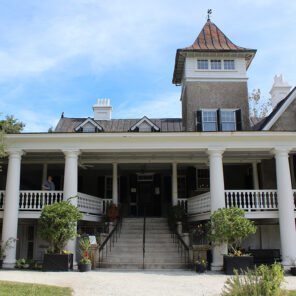
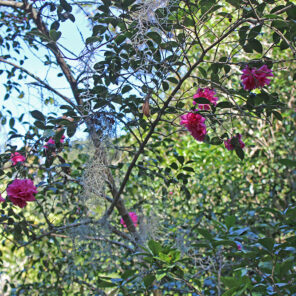

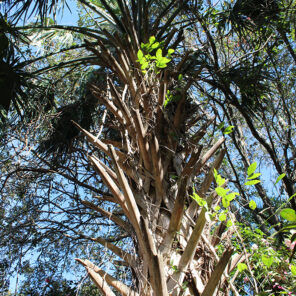



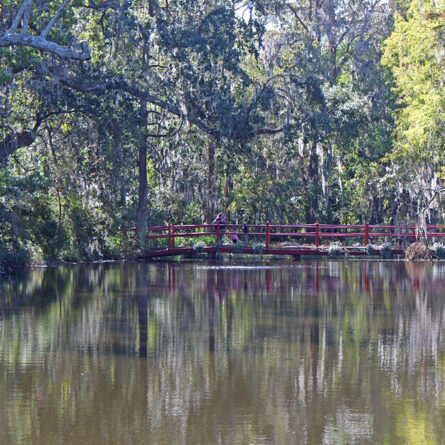

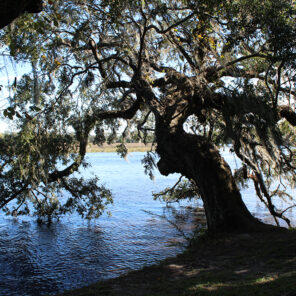
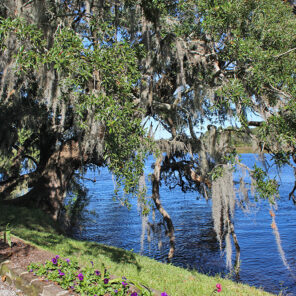
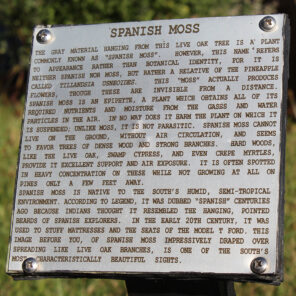

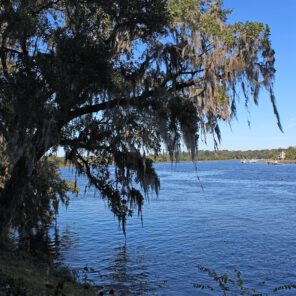


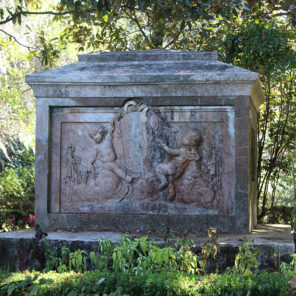
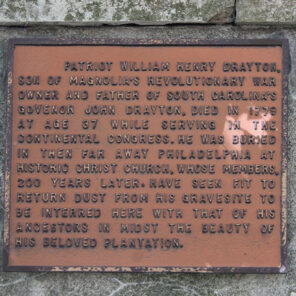
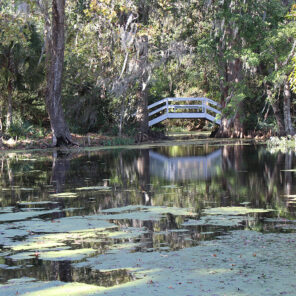

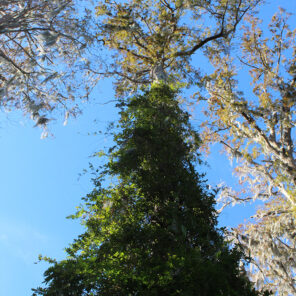
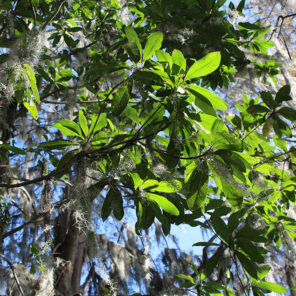

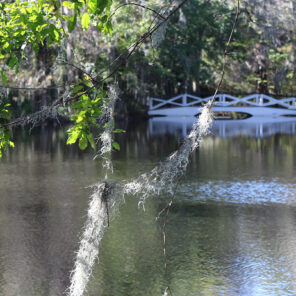
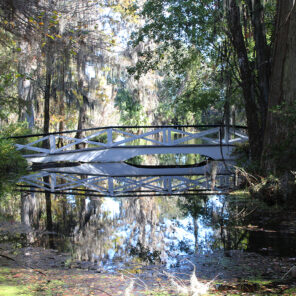

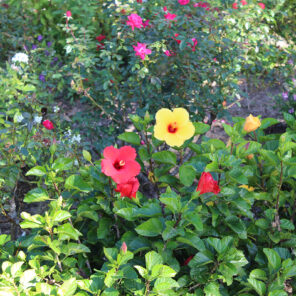






Comments are closed here.